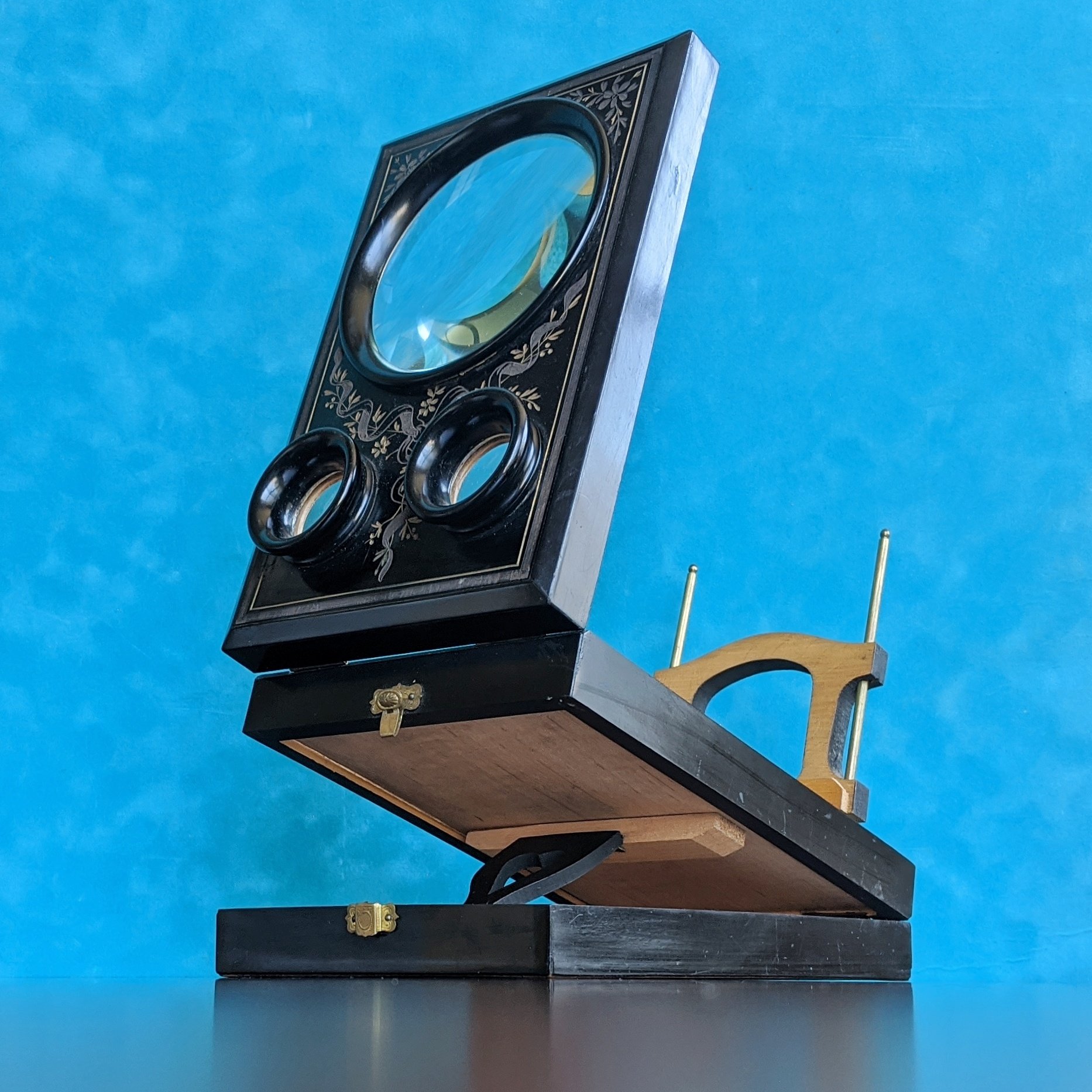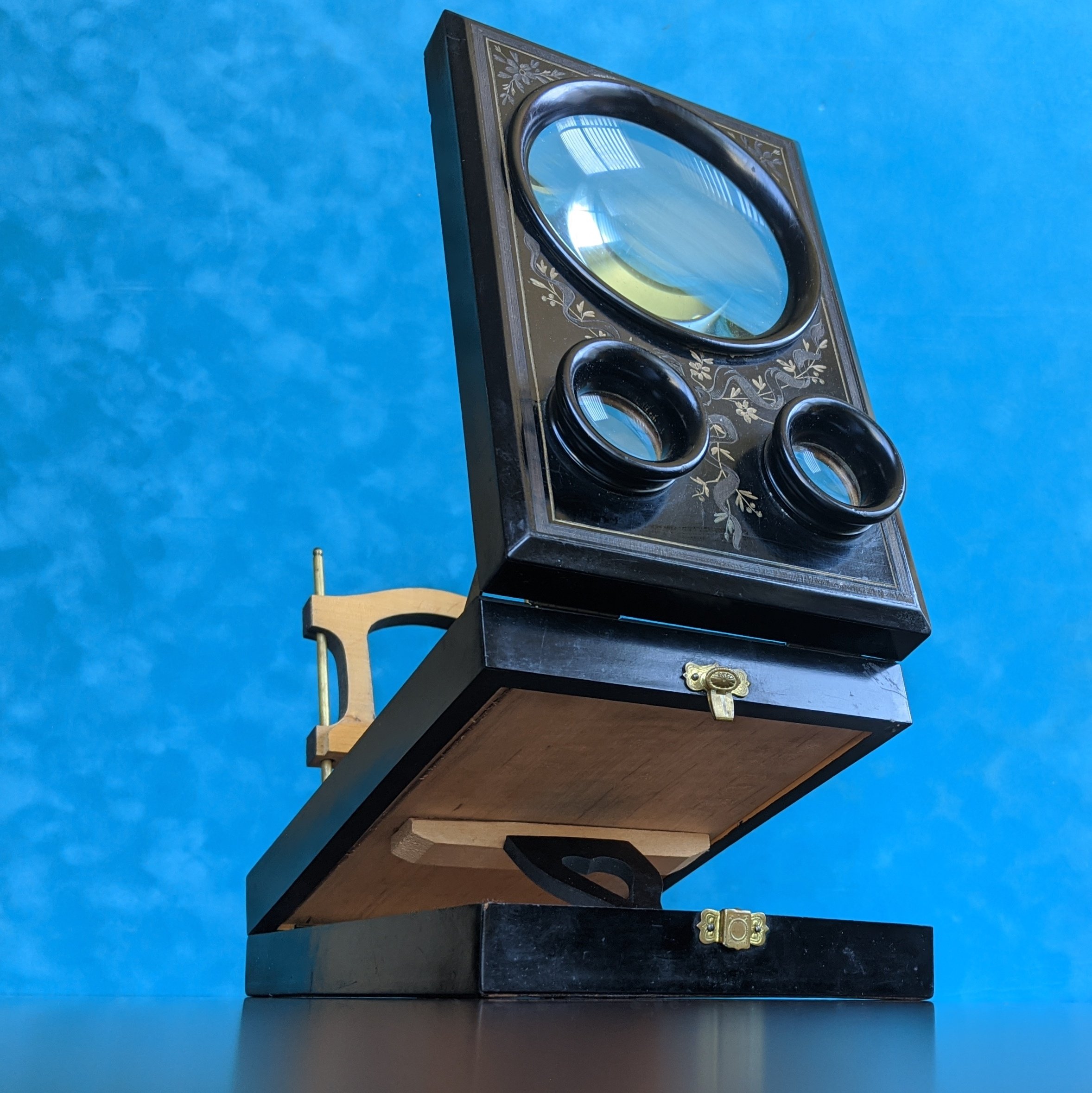Stereographoscope, Tabletop
France, 1890s
A beautifully carved, collapsible, wood stereo viewing device with a larger magnifying lens — that’s the graphoscope part — for viewing normal, non-stereo photos. This particular style was called Pantoscope in France. It was introduced in 1890 by Fouquet (one of Mattey’s predecessors) and then manufactured by different companies, including Mattey. Focus can be achieved by sliding the cardholder back and forth but there’s no interocular adjustment to adjust the distance between the lenses. Many stereographoscopes were cheaply made but you can also find some beautifully designed ones. There were also stand-mounted stereographoscopes as well as handheld stereographoscopes. For more information, André Ruiter has an excellent short article on tabletop stereographoscopes.
Stereographoscope with Handpainted Asian Art
Custom, handpainted artwork showing a man using a graphoscope while the others look on with interest. That makes this early 1900s stereographoscope a unique piece. Typically, these types of viewers were cheaply made in France, had only basic decor, and were widely available. But sometimes special details were added like elaborate carvings, inlaid pearl, or custom art like this one.









